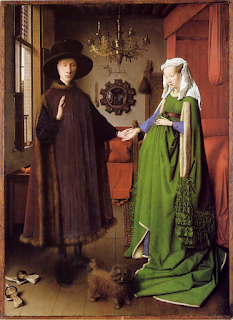 Before the public interest and governmental control, marriage was often between two people and their families and while a public spectacle, it was not necessarily controlled or sanctioned by the government for many years. In fact for many years, a couple just needed to make a declaration before God. However, a number of young women would be seduced into bed with promises of marriage that did not come to fruition. So there were changes to protect the virtue of women by declaring that there must be witnesses to the marriage. Though, once a marriage occurred they were joined together in body, spirit and mind. Any progeny would be entitled to rights and privileges according to the status of their parents. Normally, this was of no issue amongst couples of equal status, but what of couples of unequal status?
Before the public interest and governmental control, marriage was often between two people and their families and while a public spectacle, it was not necessarily controlled or sanctioned by the government for many years. In fact for many years, a couple just needed to make a declaration before God. However, a number of young women would be seduced into bed with promises of marriage that did not come to fruition. So there were changes to protect the virtue of women by declaring that there must be witnesses to the marriage. Though, once a marriage occurred they were joined together in body, spirit and mind. Any progeny would be entitled to rights and privileges according to the status of their parents. Normally, this was of no issue amongst couples of equal status, but what of couples of unequal status?Well, this was usually an issue with the upper nobility who had decided to marry someone of low status. This of course was almost exclusively upper noblemen and lower status women, but there are a few cases of women. Many members of their family would insist that if they deign to marry beneath them, then they should at the very least, marry them morganatically.
Marrying morganatically meant that the status' of either person in the couple remained unchanged. But it also meant that any children resulting from the union would not be entitled to the possible titles, ranks and property of the higher status person. These marriages were also colloquially referred to as, "Left-handed marriages". During the marriage ceremony, the groom will often grab his bride's hand with his left hand instead of his right.
It sounds really unfair, doesn't it? Well, it can be surmised that most of these marriages occurred between couples who were in love with one another and although children were not granted the same inheritance rights as a legitimate heir. A lot of fathers were rather fond of their children and as such would work to have rights, lands or titles granted to them. Or would create advantageous matches for them and thus would re-ignite the dynastic line. Also, most husbands would bestow or at least try to gain titles for their wives so that some social awkwardness can be avoided. (Not being able to remain seated in the presence of higher ranks is one example).
Some royals that had morganatic marriages:
1) Louis XIV and Madame de Maintenon (This one is rather suspect, there's no proof that the marriage existed. However, many of the court believed that it occurred, and there were portraits painted of her wearing regal robes).
2) George William of Brunswick and Eleonore d'Olbreuse. Their daughter, Sophia Dorothea of Celle, was married to George I of Great Britain.
3) Elizabeth I of Russia and Alexei Razumovsky. Again this one is rather unclear. But certainly most people believed that they were married.

